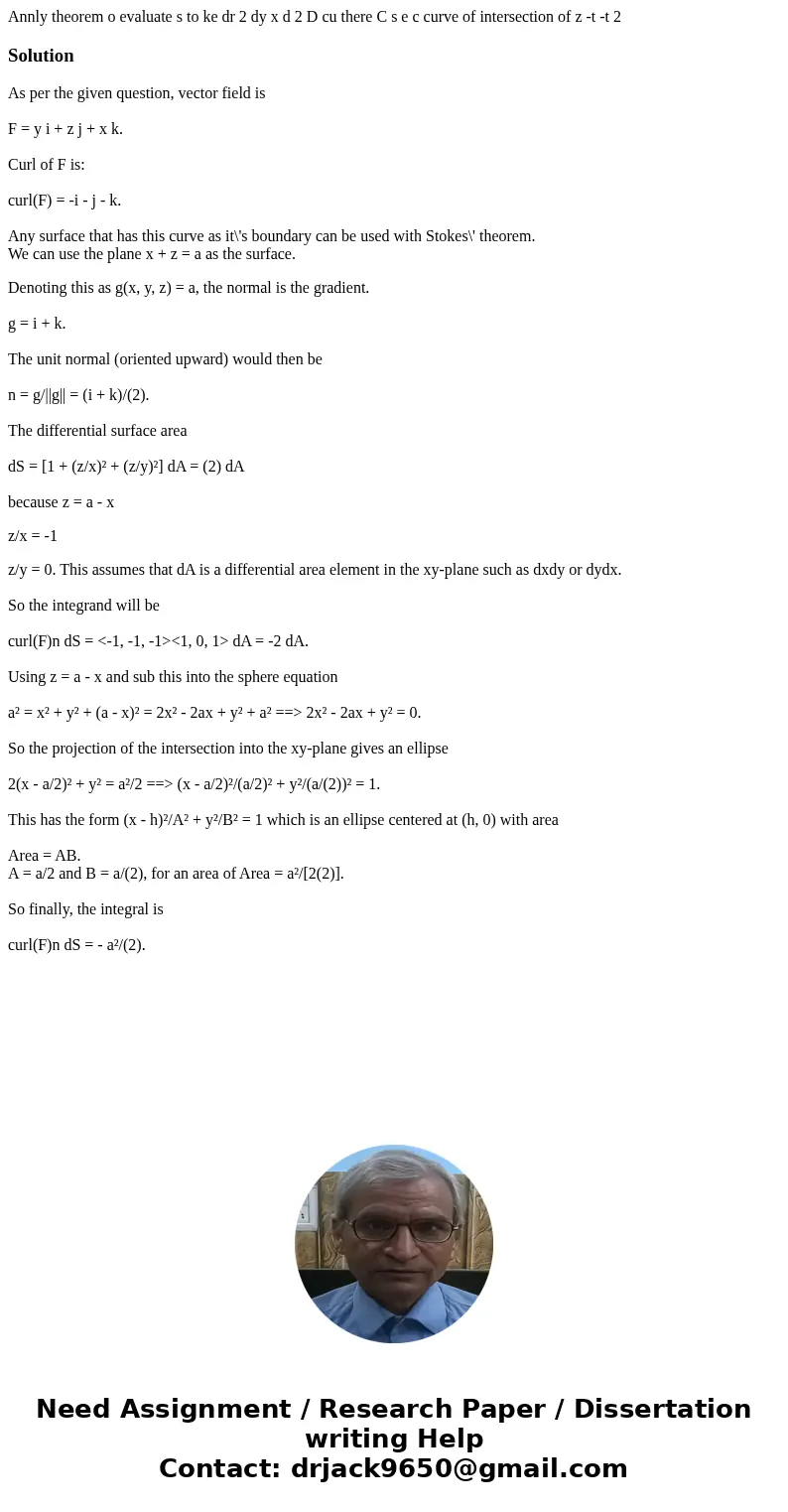Annly theorem o evaluate s to ke dr 2 dy x d 2 D cu there C
Solution
As per the given question, vector field is
F = y i + z j + x k.
Curl of F is:
curl(F) = -i - j - k.
Any surface that has this curve as it\'s boundary can be used with Stokes\' theorem.
We can use the plane x + z = a as the surface.
Denoting this as g(x, y, z) = a, the normal is the gradient.
g = i + k.
The unit normal (oriented upward) would then be
n = g/||g|| = (i + k)/(2).
The differential surface area
dS = [1 + (z/x)² + (z/y)²] dA = (2) dA
because z = a - x
z/x = -1
z/y = 0. This assumes that dA is a differential area element in the xy-plane such as dxdy or dydx.
So the integrand will be
curl(F)n dS = <-1, -1, -1><1, 0, 1> dA = -2 dA.
Using z = a - x and sub this into the sphere equation
a² = x² + y² + (a - x)² = 2x² - 2ax + y² + a² ==> 2x² - 2ax + y² = 0.
So the projection of the intersection into the xy-plane gives an ellipse
2(x - a/2)² + y² = a²/2 ==> (x - a/2)²/(a/2)² + y²/(a/(2))² = 1.
This has the form (x - h)²/A² + y²/B² = 1 which is an ellipse centered at (h, 0) with area
Area = AB.
A = a/2 and B = a/(2), for an area of Area = a²/[2(2)].
So finally, the integral is
curl(F)n dS = - a²/(2).

 Homework Sourse
Homework Sourse